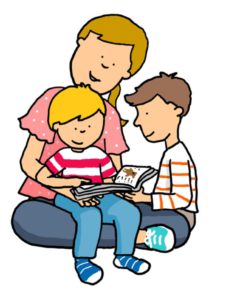1. Print the resources (see “Tips for printing and making syntax stories”).
Print the resources (see “Tips for printing and making syntax stories”).
2. You may want to add some explicit teaching or prompting prior to reading if you notice your child having some difficulties learning the syntactic form e.g. “Do you remember we use ‘he’ for boys and ‘she’ for girls? Let’s listen out for the ‘he’s’ and ‘she’s’ in the story.”
3. Share the story as you would normally share with the child. Encourage back-and-forth conversation about the story.
Highlight the targeted syntactic forms by stressing or emphasising them in the story. Say them a little louder and slower to bring the child’s attention to it.
Gauge the child’s readiness to do some of the talking during the story. Leave gaps for him/her to fill in at the appropriate places.
If the child makes a mistake in using the targeted syntactic form, ensure you provide the correct model e.g. if the child says “her hurt”, respond by saying “she is hurt”.
4. Share the story again and again, on the same day or across days to consolidate the targeted syntactic form. The child may even want to retell the story by him/herself!
